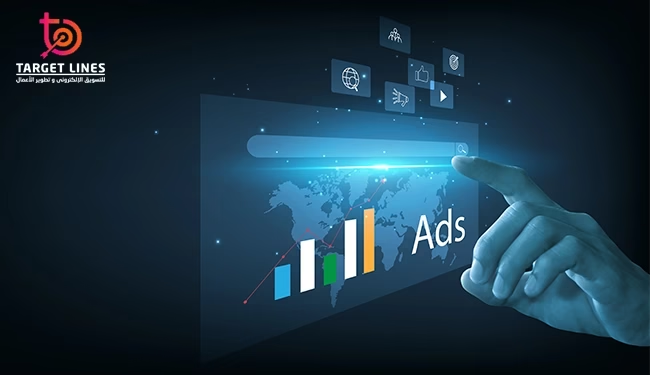Google Sponsored Ad is a powerful tool for achieving rapid business growth and increasing the number of potential customers. However, managing them effectively requires a clear understanding of how to activate and pause ads according to the right marketing strategy. In this guide, we’ll explain how to create a sponsored ad on Google, as well as ways to optimize performance and avoid wasting your advertising budget. Whether you’re a startup owner or a marketer seeking better results, you’ll learn here the key steps to setting up your campaign professionally and making the most of your budget.
قائمة المحتوى
Google Sponsored Ad
A Google Sponsored Ad is a form of digital advertising managed by a certified Google Ads specialist, where the advertiser pays Google to display their ads in premium placements across Google’s platforms including search results, display network websites, and mobile applications. This model follows the Pay-Per-Click PPC system, meaning the advertiser is charged a specific amount each time a user clicks on their ad.
Paid ads on Google’s search engine have proven to be remarkably effective in increasing website traffic, boosting sales, and enhancing overall profitability. In fact, Google reports that businesses using PPC advertising can earn up to $2 in revenue for every $1 spent on ads. Moreover, paid search results receive nearly five times more clicks than organic results, highlighting the strong impact of sponsored campaigns.
To gain deeper insights into how these ads work, this article will guide you through the process of setting up a professional Google Sponsored Ad campaign. You’ll also learn the essential strategies for managing PPC ads effectively, optimizing performance, and achieving measurable results that accelerate your business growth.
Key Advantages of Google Sponsored Ads
A Google Sponsored Ad is one of the most powerful digital marketing tools, enabling businesses and individuals to reach their target audiences quickly and efficiently. Below are the most significant benefits of using Google Ads:
Enhanced Brand Awareness
Running a Google Sponsored Ad helps showcase your business to a wide audience of online users, boosting brand recognition and establishing a strong presence in the market. It positions your brand where potential customers are actively searching for your products or services.
Precise Audience Targeting
Google Ads provides advanced targeting options based on specific criteria such as keywords, geographic location, demographics, interests, and online behavior. This precision ensures your ads reach the users most likely to engage with your offerings, maximizing conversion potential.
Increased Website Traffic
By appearing at the top of paid search results, your business gains more visibility and attracts qualified visitors to your website. This targeted traffic translates into higher engagement, more inquiries, and increased sales opportunities.
Reach Customers Anytime, Anywhere
With Google Sponsored Ad’s integrated advertising ecosystem, your ads can appear across YouTube, the Google Search tab, Discover, and other partner networks at the right time and place. Backed by Google’s AI-driven technologies, your campaigns automatically adjust to deliver the highest-performing ad formats for maximum conversions.
Measurable and Immediate Results
Unlike other long-term marketing strategies, Google Sponsored Ads deliver instant visibility and measurable outcomes. Through advanced analytics and performance tracking tools, you can monitor impressions, clicks, and conversions in real time allowing you to refine your strategy for the best return on investment.
Flexibility and Ad Variety
Google Sponsored Ads supports a diverse range of ad formats Search Ads, Display Ads, Video Ads, and App Ads giving you the freedom to choose the type that best fits your goals. This versatility ensures your message reaches your audience in the most effective and engaging way possible.
Full Budget Control
Set your monthly budget, receive smart suggestions, and adjust your spending at any time. Google’s intelligent systems help you maximize your ad spend efficiency by identifying what works best and optimizing results accordingly.
Types of Pay-Per-Click PPC Ads
- Display Ads: This type of ad appears as image or banner formats displayed across websites within Google’s Display Network. It is used to increase brand awareness and capture users’ attention while they browse online.
- Video Ads: These ads include YouTube and are an effective way to promote businesses using short video clips. The ad typically appears before the main video starts and lasts a few seconds to engage viewers.
- Tracking Ads: This type is one of the latest forms of sponsored ads and closely resembles Display Ads, but it specifically targets people who have previously visited your website or online store—reminding them of your products and encouraging them to return.

Steps to Create a Google Sponsored Ad
To create a sponsored ad on Google, follow these professional steps:
Create a Google Ads Account
Start by visiting the official Google Sponsored Ads website and click “Get Started” to create a new account. You’ll need to enter your business details and payment information to activate your advertising profile.
Choose the Campaign Type
After logging in, select the campaign type that best suits your marketing goals. Options include:
- Search Ads: Appear when users search for keywords related to your business.
- Display Ads: Shown on Google’s partner websites and apps.
- Video Ads: Displayed on YouTube to promote engagement through video content.
- Shopping Ads: Ideal for retail stores to showcase products directly in search results.
Set Campaign Settings
Define your campaign’s location, language, and budget. Choose your bidding strategy, whether Cost Per Click CPC or Cost Per Mille (CPM), depending on your objectives.
Create an Ad Group
Organize your Google Sponsored Ad into groups based on related keywords that match your products or services. This helps improve targeting and campaign performance.
Write or Design Your Ad
Craft an appealing ad with a strong headline, persuasive description, and a clear call to action such as “Buy Now” or “Contact Us.” Ensure your message aligns with your audience’s intent.
Launch and Monitor the Campaign
After reviewing your settings, click “Publish” to launch your campaign. Use Google Ads’ analytics tools to track performance, monitor clicks and conversions, and optimize your campaign for better results.
What is Pay-Per-Click PPC?
It’s a mode form of digital advertising in which advertisers pay a specific fee each time a user clicks on their ad. This system is primarily designed to drive traffic to websites and attract potential customers who are actively searching for related products or services.
How to Choose the Right Keywords for a Google Sponsored Ad Campaign
Selecting the right keywords is a crucial step to ensure your ads effectively reach the right audience. Here’s a comprehensive guide to choosing them strategically:
Understand Your Business and Target Audience
Analyze your products or services: Begin by identifying what you offer and understanding their key features and benefits.
Define your target audience: Know who your potential customers are, what they need, and what interests or motivates them.
Use Google’s Keyword Planner Tool
The Google Ads Keyword Planner is a free and powerful tool that helps you discover relevant keywords for your business. It enables you to:
- Find new keyword ideas: Explore related keywords and phrases that align with your products or services.
- Analyze search volume and competition: Understand how often each keyword is searched and how competitive it is.
- Get estimated bid costs: See the expected cost-per-click (CPC) for each keyword to plan your budget efficiently.
Analyze Your Competitors
- Review competitor ads: Examine which keywords your competitors are targeting and how they position their ads.
- Use analytical tools: Tools like SEMrush, Ahrefs, or SpyFu can help identify the keywords driving your competitors’ traffic.
Choose a Balanced Mix of Keywords
- Broad and specific keywords: Combine general keywords that cover a wide audience with more specific ones targeting niche segments.
- Long-tail keywords: These are longer, more specific phrases with lower competition but higher conversion potential, as they attract users ready to take action.
Continuously Evaluate Keyword Performance
- Monitor and analyze performance: Use Google Ads reports to measure which keywords are generating clicks and conversions.
- Refine your list: Remove underperforming keywords and add new ones based on your campaign’s analytical insights.
Utilize Advanced Targeting Features
- Match types: Use broad match, phrase match, or exact match options to control how closely search queries must match your keywords.
- Geographic and language targeting: Specify the regions and languages where you want your ads to appear, ensuring they reach the most relevant audience.
Frequently Asked Questions About Google Sponsored Ads
How much does advertising on Google cost?
You pay a maximum of $0.25 when a user clicks on your ad on Google, and you pay nothing if no one clicks. For example, if you create a text ad and set a maximum bid of $0.25 per click (or the equivalent in your local currency), you will only be charged for actual clicks.
How to get a sponsored ad on Google?
To have your ads appear in Google’s sponsored search results, you must enter an ad auction based on the relevance of your ad to the user’s search query. This auction happens millions of times daily, and your ad’s position depends on the quality score of your keyword and the bid amount you set per click.
What are Google Ads fees?
There are no fees for publishing your ad itself. You only pay based on the Cost Per Click (CPC) model, meaning you’re charged each time someone clicks on your ad.
In conclusion, a Google Sponsored Ad is one of the most powerful marketing tools to boost visibility and attract potential customers quickly and effectively. If you’re looking for a reliable partner to manage your advertising campaigns efficiently, Target Lines Marketing Agency offers you comprehensive solutions to maximize your return on investment and achieve your marketing goals.






